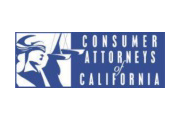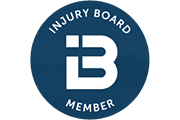If you’ve read my posts about bicycle accidents before, checked out my blog, or even browsed my website, you know that one of my greatest goals is to reduce injuries and fatalities due to bicycle collisions, through making persons and companies and public entities accountable when they needlessly endanger bicycle riders, and also through advising about safer bicycle riding. The statistics are shocking: 100 or more people per year die from bicycle collisions in California alone. This number is deplorable and should be drastically reduced.
How can we as bicycle riders and bicycle lawyers work toward reducing bicycle deaths, and also bicycle injuries?
Our law firm is always handling cases on behalf of bicyclists all over California, making those who harm bicyclists accountable, and trying that way to change bad driving behavior and bad roadway design and bad bicycle product design and manufacturing. Also, we cyclists need to ride more defensively and to better look after ourselves.
Even if you are right under the law, in my opinion a bicyclist is better off avoiding a collision, and remaining alive and uninjured than boldly insisting on his or her rights. Winning a lawsuit afterwards is not as good as not getting hurt, right? So, please help me to get less cases by avoiding injuries while you are on your bike. Below are a few hints how you can avoid getting hurt on your bike.
Remember, cyclists, you don’t own the road. If that is offensive, too bad. Cars don’t own the road either. We all must work together to ensure each other’s safety, and being personally responsible for your own safety is the first step towards ensuring the safety of others. The number one key point to remember is that a bicyclist has the same rights to the roadway as a motorist, and a bicyclist must also follow all of the same rules as motorists, and then some additional rules as well. So, you as a biker have a right to use the roadway, but you have an obligation to follow the rules of the road, no exceptions.
Let’s review the DMV’s four major safety tips that all cyclists should bear in mind each time they get on their bike:
Maintain control of your speed and your position in the lane. Seems simple, right? Many of my clients are partially responsible for their collisions and their injuries simply because they were not adequately in control of their bicycle speed or their position on the roadway.
A cyclist needs to be consistently and constantly strategizing in anticipation of what is coming up on the road, or what might be coming up on the road, whether that is a sharp turn or a car turning right at the corner ahead. If you are pressing the outside of the envelope for traction, speeding into traffic or an area congested with pedestrians, you may have the right of way when you enter that intersection, but ask yourself if you are increasing or reducing the safety of those sharing the road with you? If, by not allowing yourself or drivers or pedestrians a margin for error, you are probably making the roadway less safe for yourself and others.
One hint that seems fundamental, but is often overlooked: First, your bicycle should be the right size and properly adjusted to fit you. Your local bike shop should be able to do this for you. A correctly sized bike will make it easier to control, and cause you less fatigue. Next, your bike must be properly maintained and all parts must be working well if you wish to achieve control of the bike. How can you maintain control of your bicycle if your brakes are worn or not functioning? Or if your seat is not at the right height or if your bars are adjusted improperly?
Another hint that should not even need mentioning is that you should also never operate your bicycle while intoxicated, or under the influence of any alcoholic beverage or drug. For some reason, I get calls fairly often from cyclists who have been injured while they were riding under the influence. These reckless riders act surprised that it is actually illegal to ride a bicycle while under the influence. Seems fundamental to me, and it should be to all riders. Don’t drink and ride.
Even a small fall can cause a big injury. I’ve written about wearing proper bicycle protection gear before, and I’ll say it again; a traumatic brain injury can be absolutely devastating, and can cause lasting pain, disability, and even death. If you’re riding your bike, I personally believe it is smarter to wear a bicycle helmet.
Remember, brains don’t heal very well. Several bicycle coalitions don’t want mandatory helmets for all bicycle riders because they believe that making cyclists wear helmets will deter some people from riding and will reduce the number of cyclists and therefore the political force of the coalitions. I just want the bicyclists to be safer, and wearing helmets, and even gloves, and proper eye protection helps reduce bicycle injuries in many crash situations.
Even if your bike is sized properly, and your helmet is on, you still need to remain visible and alert on the road. Even the most attentive cyclist can fall victim to an inattentive driver. Wearing bright clothes, obeying all traffic laws, using appropriate hand signals, and being prepared to take evasive action, can all help you stay safe while navigating our crowded California streets.
If you have any reason to believe that you may be riding when the light starts fading or even before the sun comes up, you should have a proper light that satisfies the California law. You should have some reflective tape on your shoes or clothes and on your bike. And you should maintain a good position on the roadway where you are most likely to be perceived by motorists. Remember that most motorists do want to avoid hitting cyclists, and you can help them by making yourself and your bike and your clothes more visible and positioning yourself on the roadway so that your presence is not a surprise. Pass cars and busses where they are most likely to anticipate you riding, make some noise, and try not to violate driver expectation by riding in a manner that is not predictable.
The more predictable you ride, the less likely you are going to be struck by a motorist with the excuse that he just didn’t see you. And try to remember to signal. That does not mean flipping the truck driver off or screaming at a pedestrian to get the f#%# out of your way. Try not to scare anyone else on the road.
Part of being obliged to follow all of the same traffic rules as cars means riding with traffic, following posted signs, and acting like you would if you were in a four wheeled vehicle instead of a two wheeled bicycle. Use all the correct lanes, watch out for parked vehicles, and treat everyone on the road with the same respect you expect yourself.
If you have to ride on the opposite side of the road, for safety reasons, or because of the configuration of a particular roadway, please make sure that you make yourself obvious and visible to motorists, especially those coming out of driveways who might be looking to their left as they pull their vehicles to their right. Use a bicycle light or ride extra slowly, like at the same pace as a pedestrian, so you don’t surprise any drivers and contribute to your own collision. If you think that drivers will not anticipate your being where you are, take extra steps to be safe and visible.
The above basic hints will hopefully help you to enjoy a safer ride with less close calls and less crashes and injuries. The hints above are by no means all encompassing, however, after three decades of representing bicycle riders who are hit by motorists, I know that following the above recommendations will help to reduce bicycle accidents and injuries. Ride safely, and have fun.
 Hello, I’m Claude Wyle, a San Francisco bicycle accident attorney. Have an idea for a topic you’d like to see covered here? Feel free to contact me or visit www.ccwlawyers.com
Hello, I’m Claude Wyle, a San Francisco bicycle accident attorney. Have an idea for a topic you’d like to see covered here? Feel free to contact me or visit www.ccwlawyers.com





